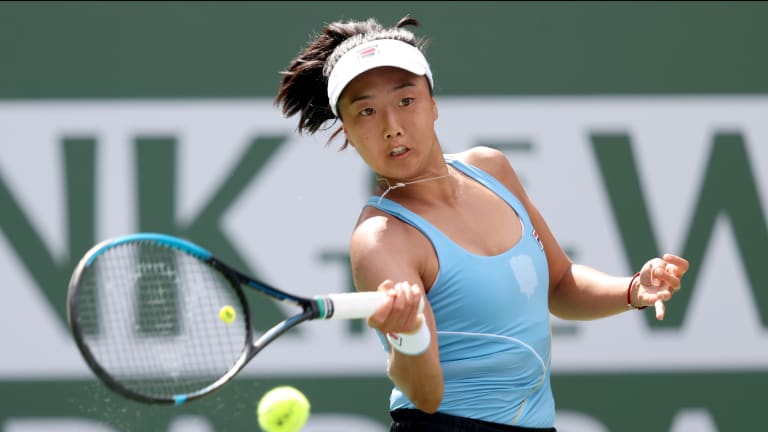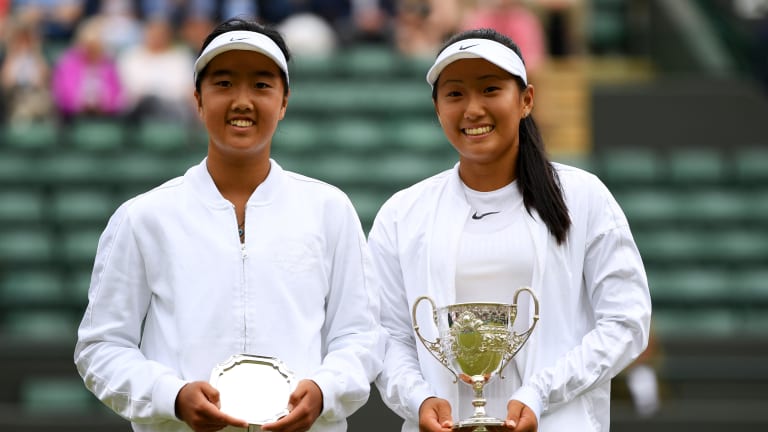Li has taken pains to study and model her game style and demeanor after some of the all-time greats. She met her idol, Roger Federer, at the Wimbledon Champions Ball in 2017, but she also tries to incorporate the best qualities of Rafael Nadal, Novak Djokovic, Justine Henin, Kim Clijsters and Li Na into her game.
“Roger, obviously everything he does is great, but you can’t replicate that because he’s his own thing,” Li says. “Just the way he builds and constructs the points. Sometimes he makes it look so easy that it’s almost a trick to the eye because you think he’s not really working, but he’s actually working extremely hard.
“Djokovic is easier to copy because he’s more standard in the way he does things. I’m trying to take from him the return of serve, how consistent he is and the way he reads balls, even if he’s not in position.
“And, obviously, with Rafa it’s his fighting spirit. So they all have something good to take from, and hopefully I can become this one person that has everything.”
Li is not the best tennis player to hail from King of Prussia, Pa. That honor belongs to sisters Barbara and Kathy Jordan. Barbara was the 1979 Australian Open champion; Kathy was ranked No. 5 in 1984, a year after she lost to Martina Navratilova in the Australian Open final. Li had never heard of the Jordans, though her mother once introduced a very young Ann to Bob Jordan, the sisters’ father.
Li’s parents, Feng and Jianchao, emigrated from China but were not, contrary to previous reports, college athletes. Her father played recreational soccer and her mother ran track for leisure. An older brother, Fred, played on the high school tennis team and, in a story not unheard of in the professional ranks, Ann tagged along to lessons until the pro identified her as the family’s true tennis talent.
“I was always a super energetic kid, trying to do something,” Li says.
Ultimately, Li ended up playing at the Arthur Ashe Youth Tennis Center in Philadelphia, now called Legacy Youth Tennis & Education. Before long, she was a top American junior, winning the National 18 Clay Courts in 2016 alongside boys’ winner Sebastian Korda. A year later, she reached the junior final at Wimbledon, losing to Claire Liu in the first all-American girls’ final since Mary Lou Piatek beat Alycia Moulton in 1979.


